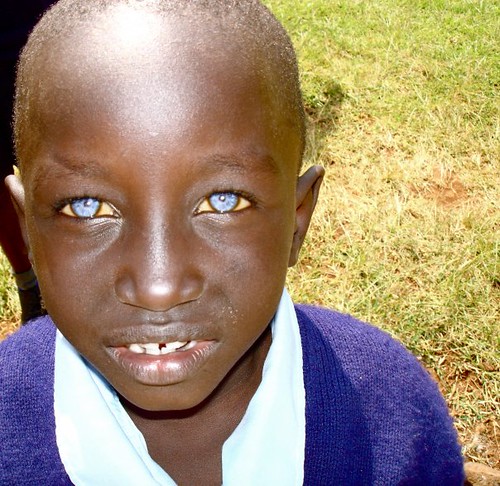Post by djoser-xyyman on Jul 7, 2011 6:23:30 GMT -5
Study conducted on South Africans Colored and Bantu in the early 1900s
=================
QUANTITATIVE DATA ON SKIN PIGMENTATION IN SOUTH AFRICAN RACES
H. P. WASSERMAN ' AND
Several qualitative studies on skin pigmentation in South
African populations are available:' while the only published
quantitative data, those of Tobias: are concerned
mainly with genetic and anthropological problems.
Weiner et al.. '" in their study of South African populations only include data on the Cape Coloured as measured
in Cape Town, and on some South West African Bantu
and Bushmen populations.
A note was made of the eye colour in each individual.
As most investigators using an eye-colour chart finally
reduce their results to brown-black, intermediate and blue,
no attempt was made to match the eye colour with a
colour chart. Any eye colour that was not brown or blue
was classified as 'intermediate'.
The Bantu group consisted of 104 males of whom 99
were Xhosa, 3 Sotho and 2 of the Bubeka tribe
Note on Eye Colour
Eye colour has been studied by various workers. Our
results largely correspond to previously reported observations.
As far as White males are concerned, the study by
Van der Westhuysen' differs markedly from our findings,
which, however, agree closely with those of Grobbelaar'
and Skinner.' The females in this group have about the
same distribution of eye colour as the males.
In the Bantu, black and brown eyes occurred in all our
cases. Blue or intermediately coloured eyes do, in fact,
occur but are extremely rare.
=================
QUANTITATIVE DATA ON SKIN PIGMENTATION IN SOUTH AFRICAN RACES
H. P. WASSERMAN ' AND
Several qualitative studies on skin pigmentation in South
African populations are available:' while the only published
quantitative data, those of Tobias: are concerned
mainly with genetic and anthropological problems.
Weiner et al.. '" in their study of South African populations only include data on the Cape Coloured as measured
in Cape Town, and on some South West African Bantu
and Bushmen populations.
A note was made of the eye colour in each individual.
As most investigators using an eye-colour chart finally
reduce their results to brown-black, intermediate and blue,
no attempt was made to match the eye colour with a
colour chart. Any eye colour that was not brown or blue
was classified as 'intermediate'.
The Bantu group consisted of 104 males of whom 99
were Xhosa, 3 Sotho and 2 of the Bubeka tribe
Note on Eye Colour
Eye colour has been studied by various workers. Our
results largely correspond to previously reported observations.
As far as White males are concerned, the study by
Van der Westhuysen' differs markedly from our findings,
which, however, agree closely with those of Grobbelaar'
and Skinner.' The females in this group have about the
same distribution of eye colour as the males.
In the Bantu, black and brown eyes occurred in all our
cases. Blue or intermediately coloured eyes do, in fact,
occur but are extremely rare.













